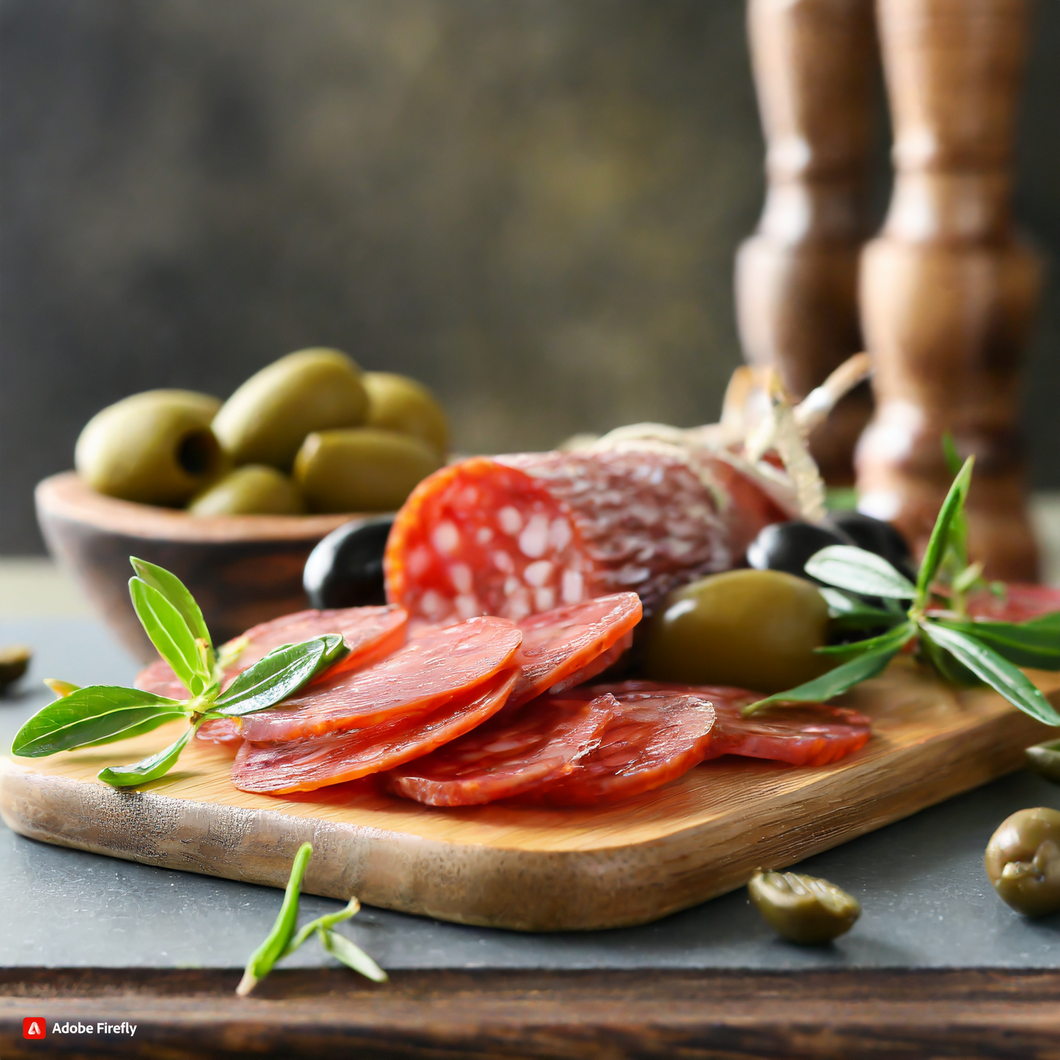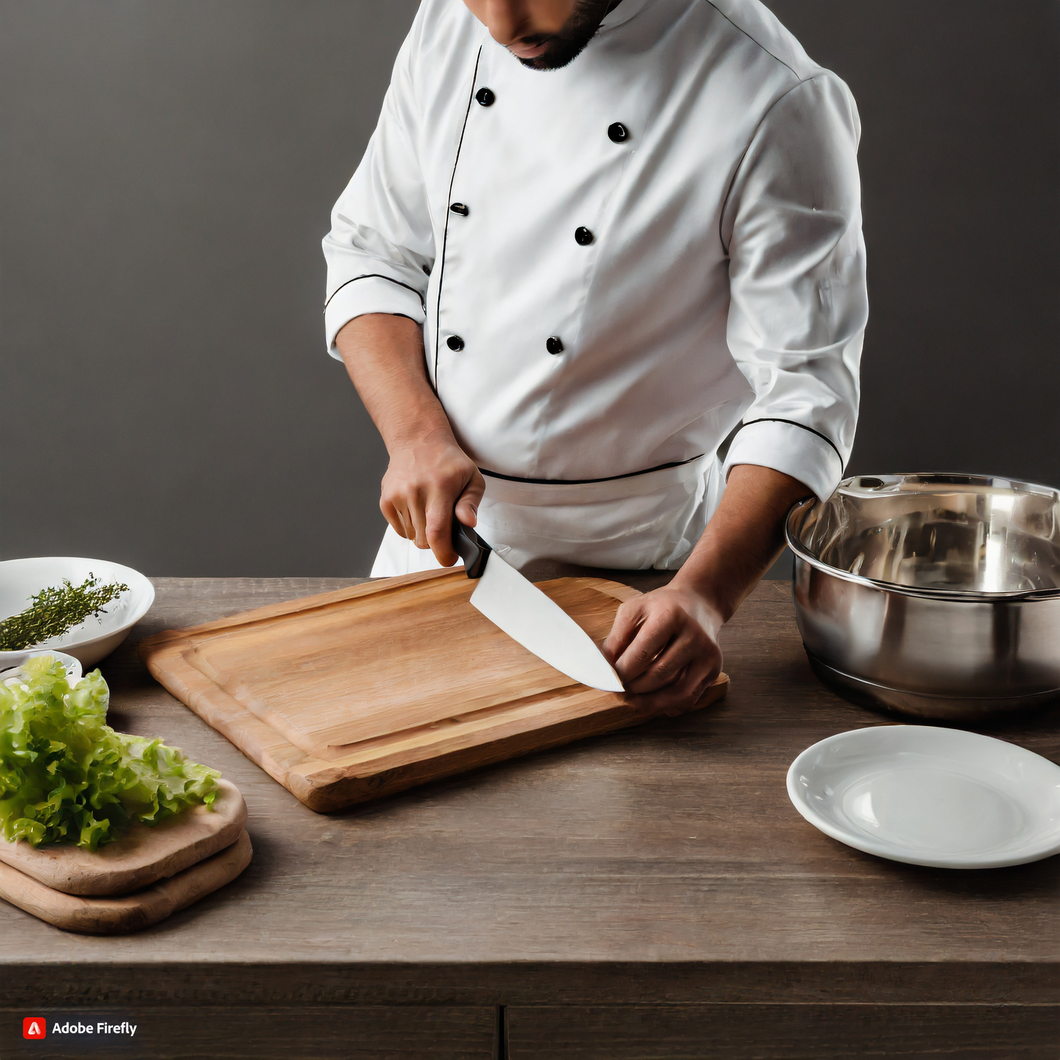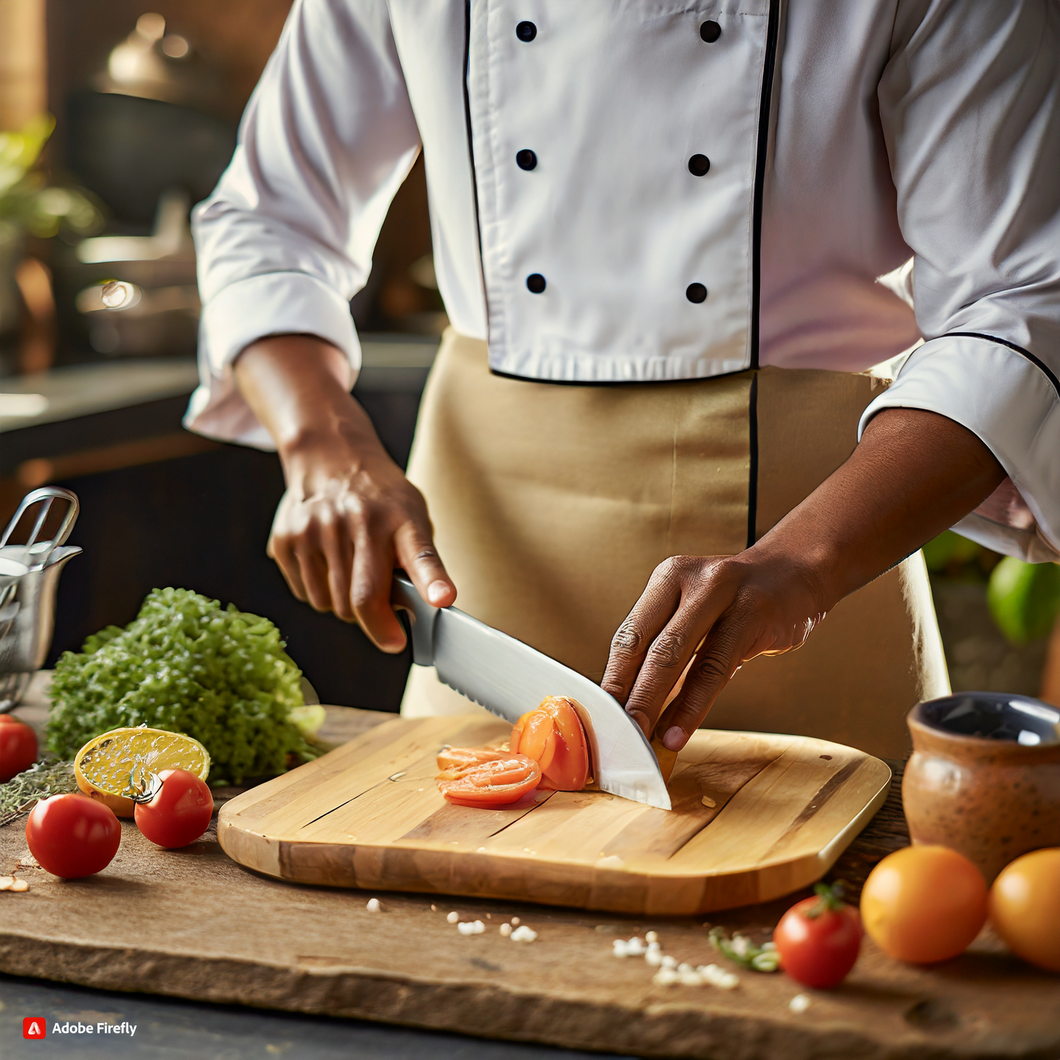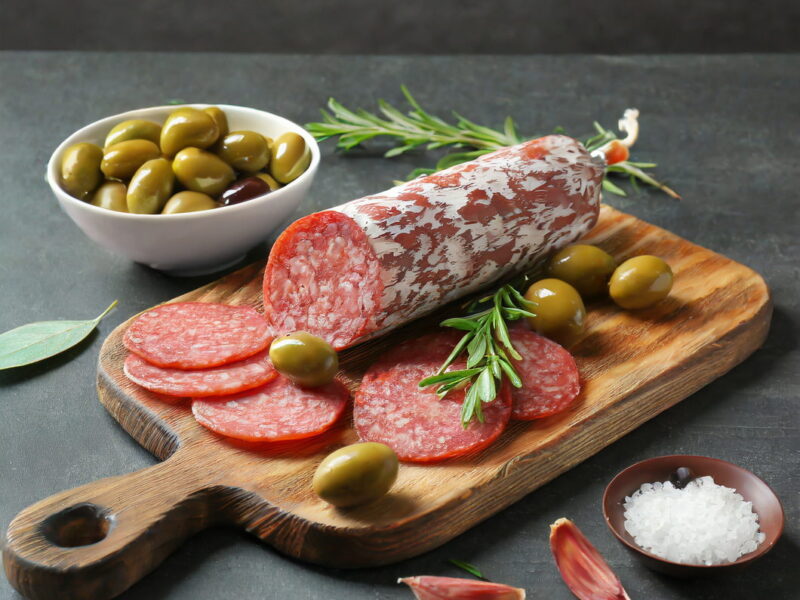Introduction
Cutting Board Chronicles is a comprehensive guide to choosing the perfect Cutting Board for your kitchen. Whether you’re a professional chef or a home cook, having the right Cutting Board is essential for preparing meals efficiently and safely. In this guide, we will explore the different types of cutting boards available, their pros and cons, and provide tips on how to select the best one for your needs. With the help of Cutting Board Chronicles, you’ll be able to find the perfect canvas for all your culinary creations.
The Importance of Material: Why Choosing the Right Cutting Board Matters
When it comes to cooking, having the right tools is essential. From pots and pans to knives and utensils, each item plays a crucial role in creating delicious meals. However, one item that often gets overlooked is the Cutting Board. Many people may not realize the importance of choosing the right Cutting Board, but it can make a significant difference in the kitchen. In this edition of Cutting Board Chronicles, we will be discussing the importance of material and why choosing the right Cutting Board matters.

First and foremost, let’s talk about the different materials that cutting boards are made from. The most common materials are wood, plastic, and bamboo. Each material has its own unique qualities and benefits, so it’s essential to understand them before making a decision.
Wooden cutting boards are a classic choice and have been used for centuries. They are durable, have a natural antibacterial property, and are gentle on knives. However, they do require more maintenance, such as oiling and proper cleaning, to prevent bacteria from growing. Plastic cutting boards, on the other hand, are low maintenance and easy to clean. They are also lightweight and come in a variety of colors, making them a popular choice for many home cooks. However, they are not as durable as wooden cutting boards and can develop deep grooves over time, which can harbor bacteria.
Bamboo cutting boards have gained popularity in recent years due to their eco-friendly nature. They are a sustainable and renewable resource, making them an excellent choice for those looking to reduce their carbon footprint. Bamboo cutting boards are also durable, lightweight, and gentle on knives. However, they do require regular oiling to maintain their longevity.
Now that we have discussed the different materials let’s dive into why choosing the right Cutting Board matters. The first and most crucial reason is food safety. As mentioned earlier, plastic cutting boards can develop deep grooves over time, which can harbor bacteria. This can be a significant health concern, especially when cutting raw meat. Wooden and bamboo cutting boards, on the other hand, have natural antibacterial properties, making them a safer option for food preparation.
Another reason to choose the right Cutting Board is to protect your knives. Using a hard surface, such as glass or marble, can dull your knives quickly. Wooden and bamboo cutting boards are more forgiving and gentle on knives, helping them maintain their sharpness for longer. This not only saves you money on constantly sharpening your knives but also makes food preparation more efficient.
The material of your Cutting Board can also affect the taste of your food. Plastic cutting boards can absorb strong odors and flavors from food, which can transfer to other foods being prepared on the same board. This can be a problem when preparing different types of food, such as onions and fruit. Wooden and bamboo cutting boards do not have this issue, making them a better choice for those who enjoy a variety of flavors in their meals.
Lastly, the material of your Cutting Board can also impact the environment. As mentioned earlier, bamboo cutting boards are a sustainable and renewable resource, making them an eco-friendly choice. Wooden cutting boards, if made from sustainable sources, can also be a more environmentally friendly option compared to plastic cutting boards, which are not biodegradable.
In conclusion, choosing the right Cutting Board is essential for food safety, protecting your knives, and even the environment. Each material has its own unique qualities and benefits, so it’s crucial to consider them before making a decision. Whether you prefer the classic wooden Cutting Board or the low maintenance plastic Cutting Board, make sure to choose one that suits your needs and preferences. Happy cooking!
Size Matters: Finding the Perfect Cutting Board for Your Kitchen Needs
When it comes to cooking, having the right tools is essential. From pots and pans to knives and utensils, each item plays a crucial role in creating delicious meals. One often overlooked but equally important tool is the Cutting Board. This humble kitchen essential serves as the foundation for all your chopping, slicing, and dicing needs. But with so many options available, how do you choose the perfect Cutting Board for your kitchen? In this edition of Cutting Board Chronicles, we’ll be discussing the size of cutting boards and how to find the perfect one for your kitchen needs.
First and foremost, let’s address the elephant in the room – size does matter when it comes to cutting boards. While it may be tempting to opt for a smaller board to save space in your kitchen, this can actually hinder your cooking experience. A small Cutting Board may be suitable for quick tasks like slicing a lemon or mincing garlic, but for more extensive meal prep, a larger board is necessary. Not only does a larger board provide more surface area for cutting, but it also allows you to work with multiple ingredients at once without having to constantly clean and switch boards.

So, how do you determine the right size for your Cutting Board? The general rule of thumb is to choose a board that is at least 15 inches long and 10 inches wide. This size provides enough space for most kitchen tasks and is also easy to store. However, if you have a larger kitchen or frequently cook for a crowd, you may want to consider a board that is 20 inches long and 14 inches wide. This size is perfect for handling larger cuts of meat and multiple ingredients at once.
Another factor to consider when choosing the size of your Cutting Board is the size of your kitchen counter. If you have limited counter space, a smaller board may be more practical. However, if you have ample counter space, a larger board can serve as a multi-functional surface for prepping and serving food. Additionally, if you have a kitchen island, a larger Cutting Board can be placed on top to create a designated prep area.
Aside from the size of your kitchen, the type of cooking you do should also be taken into account when choosing a Cutting Board size. If you primarily cook vegetarian meals, a smaller board may suffice. However, if you frequently cook meat, a larger board is necessary to prevent cross-contamination. It’s essential to have enough space to properly separate raw meat from other ingredients to avoid any food safety issues.
Lastly, consider your personal preferences and cooking habits when selecting the size of your Cutting Board. If you enjoy cooking elaborate meals with many ingredients, a larger board may be more suitable. On the other hand, if you prefer quick and simple meals, a smaller board may suffice. It’s also important to consider your physical abilities. If you have difficulty lifting or maneuvering a larger board, a smaller one may be a better option for you.
In conclusion, when it comes to cutting boards, size does matter. Choosing the right size for your kitchen needs can greatly enhance your cooking experience and make meal prep more efficient. Remember to consider the size of your kitchen, the type of cooking you do, and your personal preferences when selecting a Cutting Board. With the perfect size Cutting Board, you’ll be well on your way to creating delicious meals in no time. Stay tuned for our next edition of Cutting Board Chronicles, where we’ll be discussing the different materials used in cutting boards. Happy cooking!
Cutting Board Care: Tips and Tricks for Maintaining Your Cutting Board’s Quality
Welcome to the Cutting Board Chronicles, where we explore all things related to cutting boards. In this section, we will be discussing the importance of properly caring for your Cutting Board to ensure its longevity and quality. A Cutting Board is an essential tool in any kitchen, and with the right care, it can last for years to come.

First and foremost, it is crucial to choose the right Cutting Board for your needs. There are various types of cutting boards available, such as wood, plastic, and bamboo. Each material has its pros and cons, and it is essential to consider these factors before making a purchase.
Wooden cutting boards are a popular choice for their durability and aesthetic appeal. However, they require more maintenance than other materials. It is essential to choose a hardwood, such as maple or cherry, as they are less prone to warping and cracking. It is also crucial to avoid using softwoods, such as pine, as they can easily be damaged by knives. Read Healthy Dessert Recipes.
Plastic cutting boards are a more affordable option and are easy to clean. However, they are not as durable as wooden cutting boards and can quickly become scratched and damaged. It is essential to replace plastic cutting boards regularly to avoid any potential bacterial growth.
Bamboo cutting boards are a sustainable and eco-friendly option. They are also durable and resistant to bacteria. However, they can be more challenging to maintain as they require regular oiling to prevent cracking and warping.

Once you have chosen the perfect Cutting Board for your needs, it is essential to properly care for it to maintain its quality. The first step is to wash your Cutting Board after each use. Use hot, soapy water and a scrub brush to remove any food particles and bacteria. It is crucial to dry the Cutting Board thoroughly to prevent any moisture from seeping into the wood and causing damage.
Another essential step in Cutting Board care is to oil your wooden or bamboo Cutting Board regularly. Oiling helps to seal the wood and prevent any moisture from penetrating it. It also helps to maintain the Cutting Board‘s natural color and prevent it from drying out and cracking. It is recommended to use food-grade mineral oil or beeswax for this purpose. Apply a generous amount of oil to the Cutting Board and let it sit for a few hours before wiping off any excess.
It is also crucial to avoid using harsh chemicals or bleach on your Cutting Board. These can damage the wood and leave harmful residues that can contaminate your food. Instead, opt for natural cleaning solutions such as vinegar or lemon juice.
In addition to regular cleaning and oiling, it is essential to take extra precautions when using your Cutting Board. Avoid using it as a hot plate or placing it in the dishwasher, as this can cause warping and cracking. It is also crucial to use separate cutting boards for raw meat and vegetables to prevent cross-contamination. Read easy Healthy Lunch for Weight Loss.
If your Cutting Board does become damaged or stained, there are a few tricks you can try to restore its quality. For minor scratches, sanding the surface with fine-grit sandpaper can help to smooth out the imperfections. For tougher stains, sprinkle coarse salt on the board and rub it with half a lemon. Let it sit for a few minutes before rinsing off with hot water.
In conclusion, proper care and maintenance are essential for keeping your Cutting Board in top shape. By choosing the right Cutting Board for your needs and following these tips and tricks, you can ensure that your Cutting Board will last for years to come. Happy chopping!
Q&A
Q: What is Cutting Board Chronicles?
A: Cutting Board Chronicles is a blog or online platform that provides information and resources about choosing the perfect Cutting Board for your kitchen needs.
Q: Who runs Cutting Board Chronicles?
A: The specific person or group who runs Cutting Board Chronicles is not specified, but it is likely run by individuals with expertise in kitchen tools and equipment.
Q: What kind of information can I find on Cutting Board Chronicles?
A: On Cutting Board Chronicles, you can find information about different types of cutting boards, their materials, sizes, and features, as well as tips for maintaining and caring for your Cutting Board. You may also find reviews and recommendations for specific cutting boards.
Conclusion
In conclusion, choosing the perfect Cutting Board is an important decision for any home cook or professional chef. The Cutting Board Chronicles provide valuable insights and information on the various types of cutting boards available, their benefits and drawbacks, and how to properly care for them. By considering factors such as material, size, and maintenance, individuals can find the perfect Cutting Board that suits their needs and enhances their cooking experience. Whether it’s a wooden, plastic, or composite board, the right Cutting Board can be a valuable tool in the kitchen and contribute to the overall success of a dish. With the help of the Cutting Board Chronicles, individuals can make an informed decision and find the perfect canvas for their culinary creations.
Please follow us on linkedin. You can learn all best canadian food recipes you can check our Culinary 1TouchFood Youtube and Telegram 1TouchFood page. Don’t forget Fighting Obesity Magazine and Radio Cooking.

